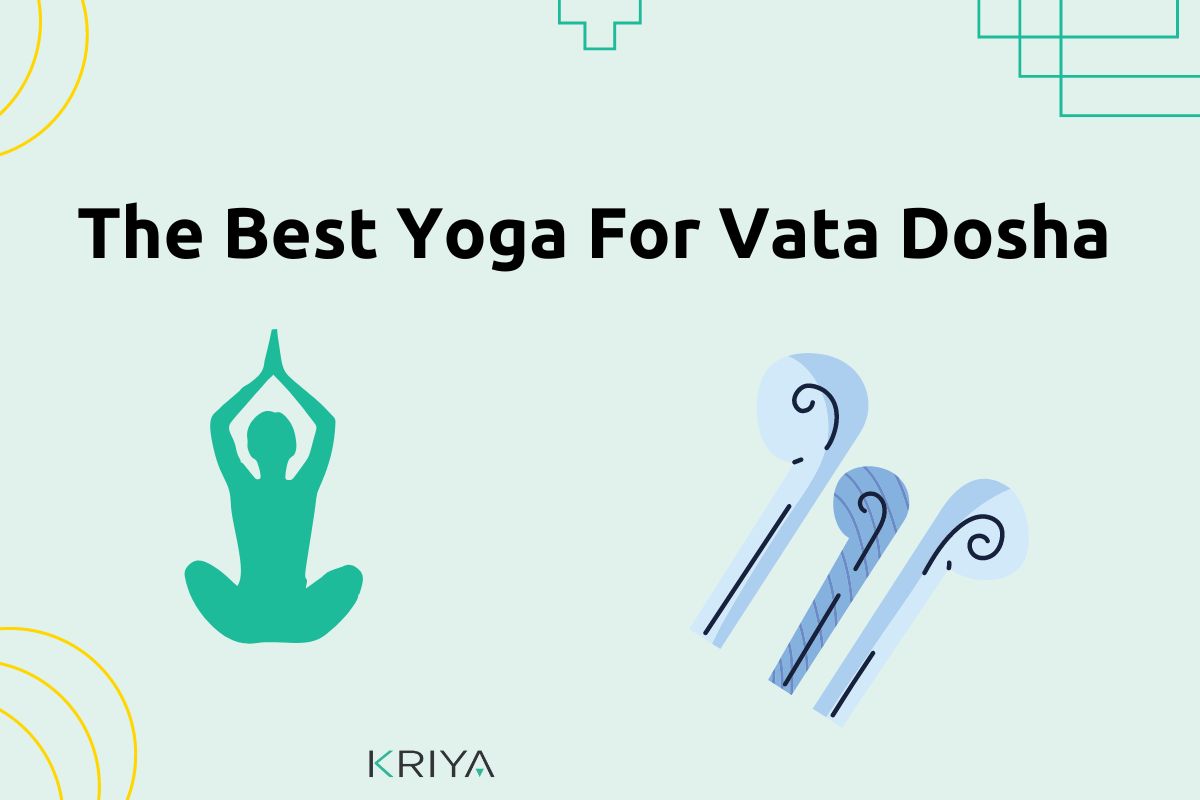
The Best Yoga For Vata Dosha
Vata Dosha is one of the three doshas in the human body. Dosha is the imbalance in the body. Vata dosha people have cold hands and feet and suffer from constipation, dry skin, anxiety, insomnia and pain in joints and muscles. Vata means air so the air element in the body causes the energy and mood to swing in people suffering from Vata dosha (air/space).
Vata helps in ensuring the smooth working of functions like respiration, smooth working of the Dhatus or tissues, and managing all natural urges like hunger, thirst, urination, excretion, sleep, etc. Vata ensures the smooth functioning of the heart, contractions of muscles, the flow of blood, and communication from the brain through the nerves to the entire body.
Those who have this type of imbalance can customize their yoga practice to bring back the balance. With proper yoga practices, you can re-establish the qualities of warmness, firmness and proper training to focus on establishing a natural state of well-being.
The best yoga for Vata Dosha
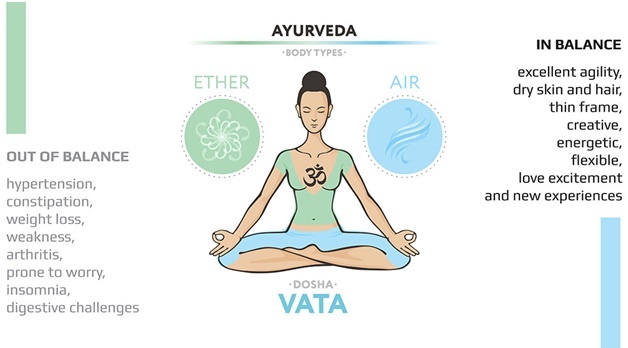
According to Ayurveda, vata pacifying yoga can balance all the doshas and give radiant and beaming health. Those with vata dosha should do the asanas which are more appropriate for vata balancing and are supposed to be calming by nature.
The lower abdomen, pelvis, and large intestine mostly house vata in the body with many of the asanas compressing the lower abdomen. Also, the yoga asanas that strengthen the lower back help improve data.
Following are the the best yoga for Vata Dosha:
1. Straight Forward Bend (Uttanasana)
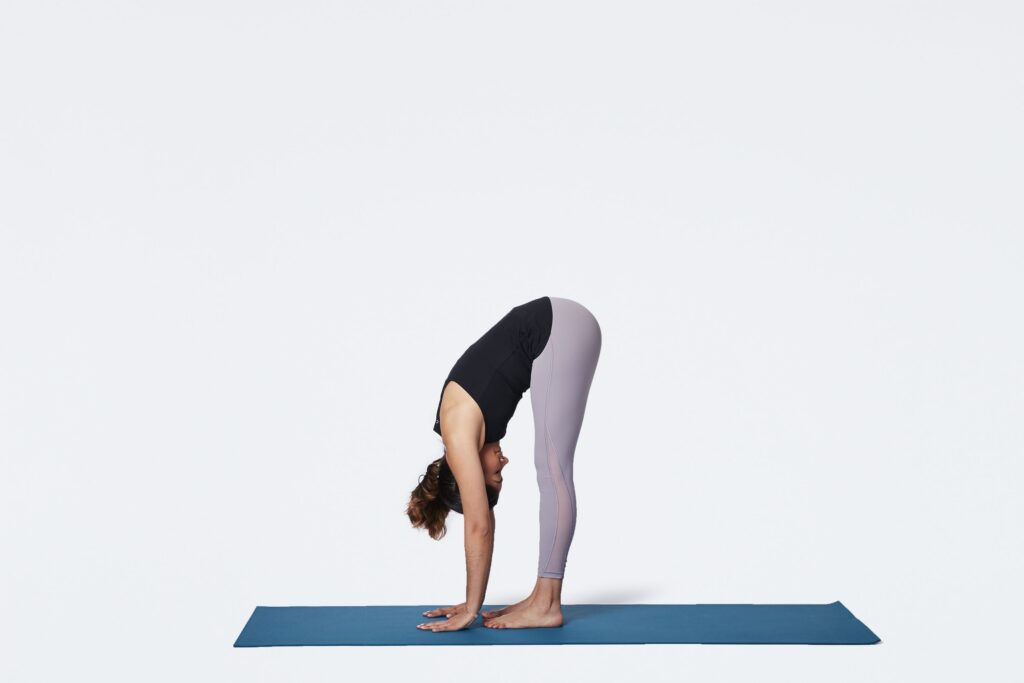
Forward Bend yoga is good for Vata dosha. The pose is entered from the standing position of Tadasana (tree pose), bending forward at the hips until the palms can be placed on the floor, ultimately behind the heels.
- You need to stand straight with shoulders in a width apart position.
- Now stretch your arms straight up and thereafter hold onto the opposing arms behind the head.
- Keep your back in a straight position and slowly bend forward taking a comfortable position.
- You try touching the ground in front.
Note that you need to be very careful while performing this yoga for Vata dosha as the back can be injured if there’s too much strain while bending.
2. Seated forward bend (Paschimottansana)
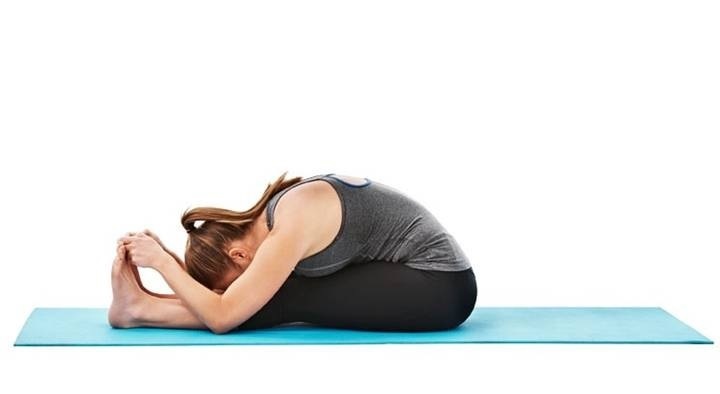
The best yoga for Vata dosha is the seated version of Uttanasana which is performed usually when the back is sore.
- The pose is entered from Dandasana (the seated Staff Pose) by bending forward from the hips without straining and grasping the feet or lower legs.
- A strap may be placed around the feet and grasped in the hands if the back is stiff.
- The head may be rested on a folded blanket or bolster, which may be raised on a small stool if necessary.
Note that if have difficulty bending your back then you should exercise it with caution when performing this asana.
3. Child Pose (Balasana)
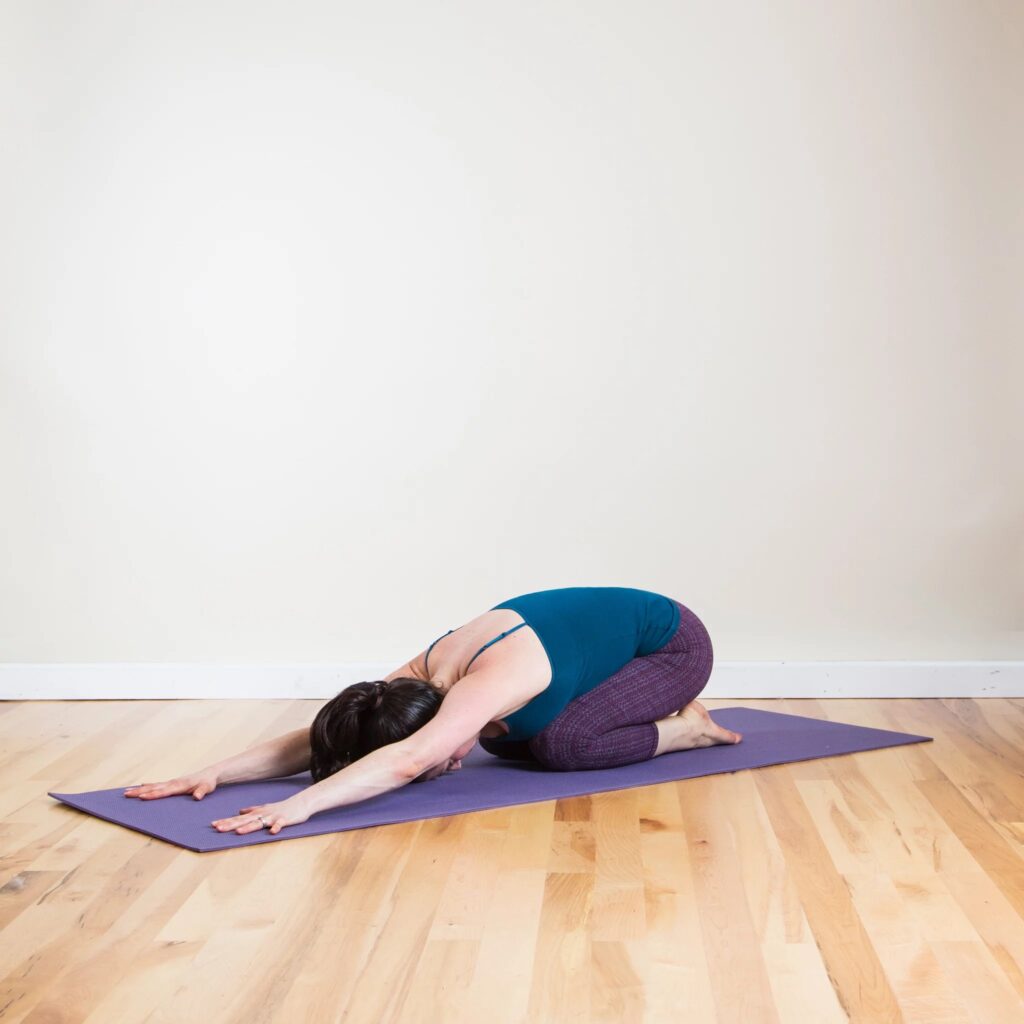
Child’s pose is another admirable yoga pose for Vata dosha which helps in constricting the pelvis region. This Vata balancing yoga is best for those suffering from constipation or indigestion.
- You need to sit in an upright position while flexing the knees and folding them under.
- Position the arms on one side and bend in the forward position, relaxing the head on the floor in front.
If you are unable to touch the head on the ground you can put a pillow or blanket underneath.
4. Reclining Hero Pose (Supta Virasana)
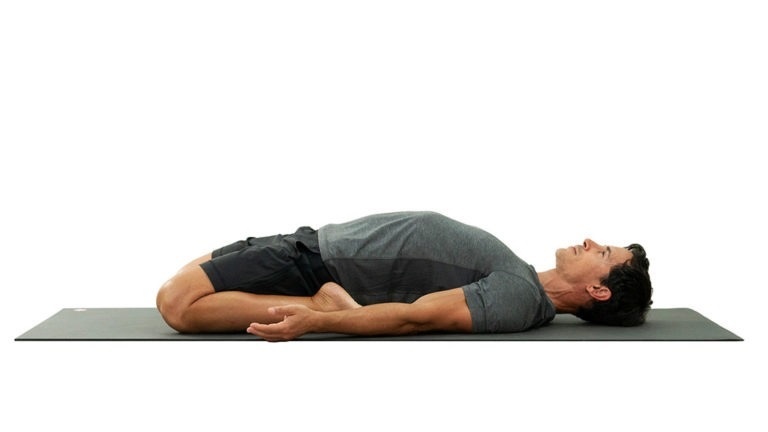
Reclining Hero Pose is another vata pacifying yoga that helps in stretching of abdominal lower back muscles increasing the pressure on the pelvis area and helping to treat asthma condition in young people.
- First you need to kneel the knees together and sit in a squatting position moving the legs out to the side of pelvis.
- You need to place hands on ends of the feet and lean backwards in a bid to touch the lower back on the floor.
Note that avoid performing this pose unless you can sit your buttocks relatively easily on the floor between your feet.
5. Bow Pose (Dhanurasana)
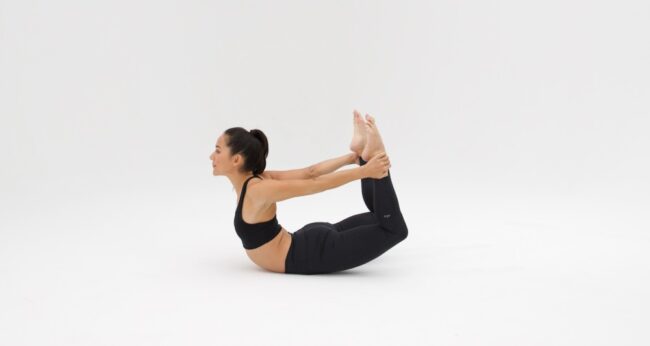
Bow pose is one of the best yoga for Vata dosha and a popular one that gives maximum Vata relief if performed regularly.
- To do this yoga you need to lie on the stomach and arms at both sides.
- Lift the head and shoulders simultaneously and mend both knees together.
- Try to reach back and touch the ankles and draw the chest upwards to let the lower body just rest on the pelvic area.
6. Camel Pose (Ustrasana)
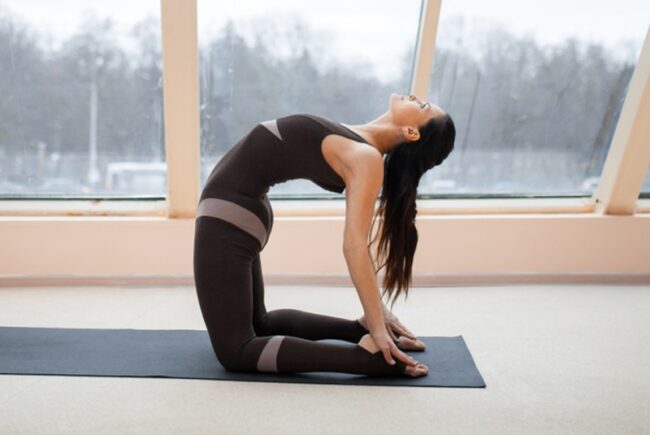
Camel poses yoga posture adds flexibility and strength to the body and also helps in improving digestion one of the causes of Vata dosha. This yoga is usually performed by people with Pitta dosha as well.
- First you have to do squatting and keep your hands on the buttocks.
- Move the pelvis area forward, pulling out the lower back and bringing the hands to touch the knees.
- Also slowly extend the neck forward and breathe easy.
This yoga pose or asana would make the stomach, plexus and the chest areas flexible, allowing the free movement of energy through these organs and if Vata is trapped it will be removed.
7. Sun Salutation (Surya namaskar)
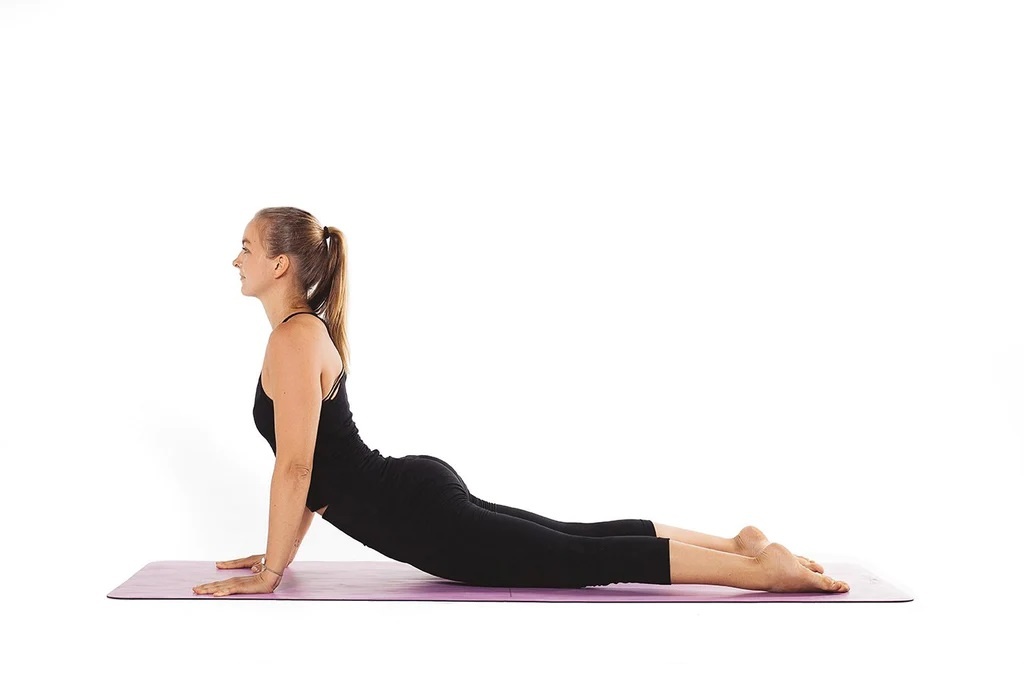
Sun Salutation yoga is best for all types of doshas or imbalances in the human body. Also one of the best yoga for Vata dosga as when doing Surya namaskara it creates heat and opens the chest for energies to pass through.
- In total there are 12 positions to follow in this yoga whereby the first begins with standing erect, raising arms towards the sun and bending backwards.
- Now bend forward and fold the knees and then perform the adho mukha shavasana.
- Taking the cobra pose pressing back and then coming to the standing position once again complete a cycle of Surya namaskar.
This has to be repeated several times to be effective in balancing the Vata.
Points to remember
- Remember that the above best yoga for Vata dosha should be practiced slowly, step by step and in smooth and steady pace with more flexibility in the poses.
- Also before you practice the above yoga poses you need to relax both physically and mentally and loosen up after practising the asanas. According to Ayurveda, one should always conclude the yoga with a warm bath to calm the senses after the rigorous workout.
More Vata Dosha Yoga Poses Click Here
- As most of the above-mentioned yoga poses for Vata dosha affect the spinal and pelvic areas, it is important to not overdo or exert yourself on these joints. Each posture of the yoga asanas should be performed for short intervals and can be done several times though.
- While doing the yoga poses the area below the navel and above the pubic bone is the power center and hence should be most concentrated on.
- These best yoga for Vata dosha are specifically for the Vata body type and involve all the body muscles while performing.
